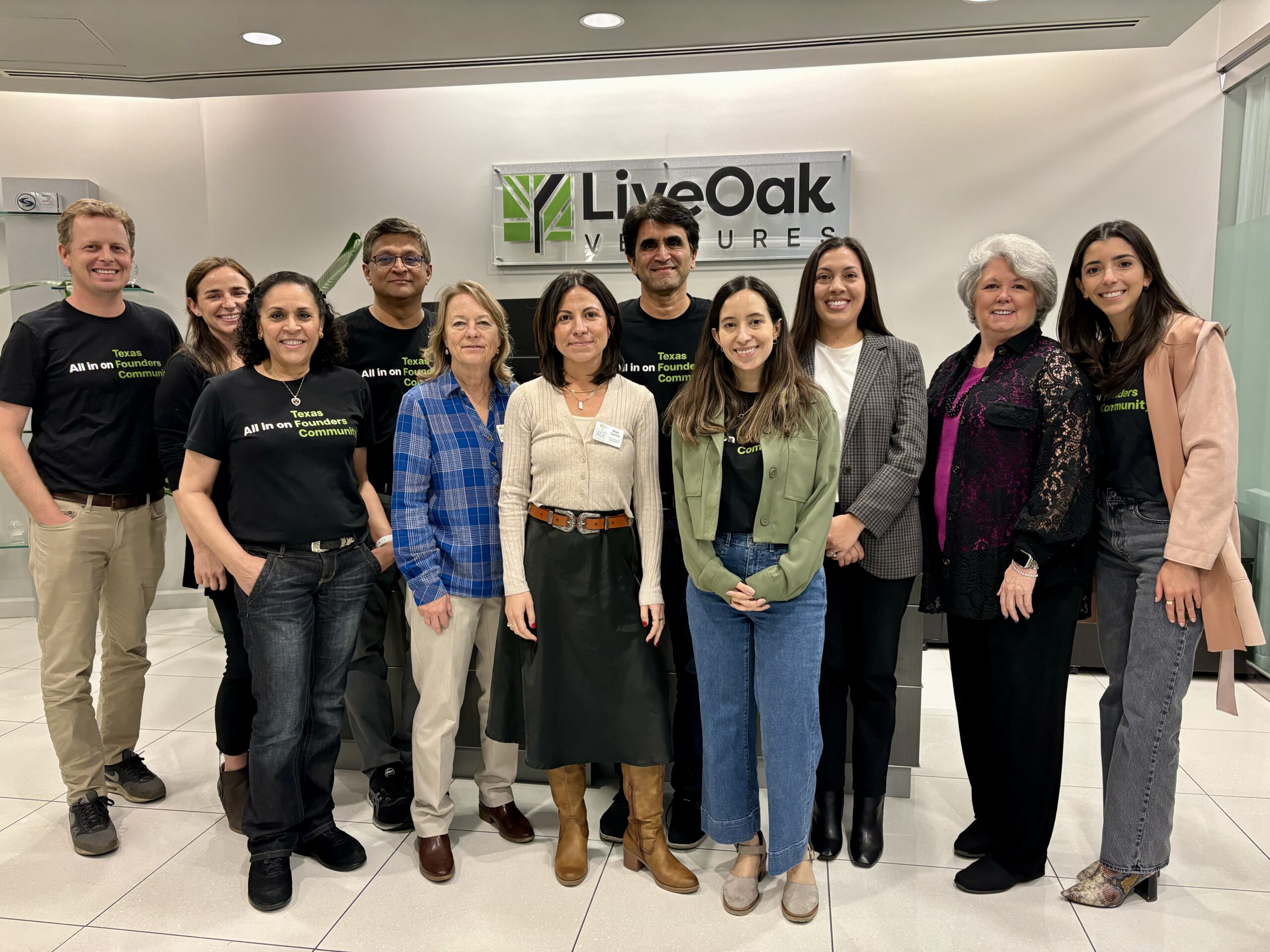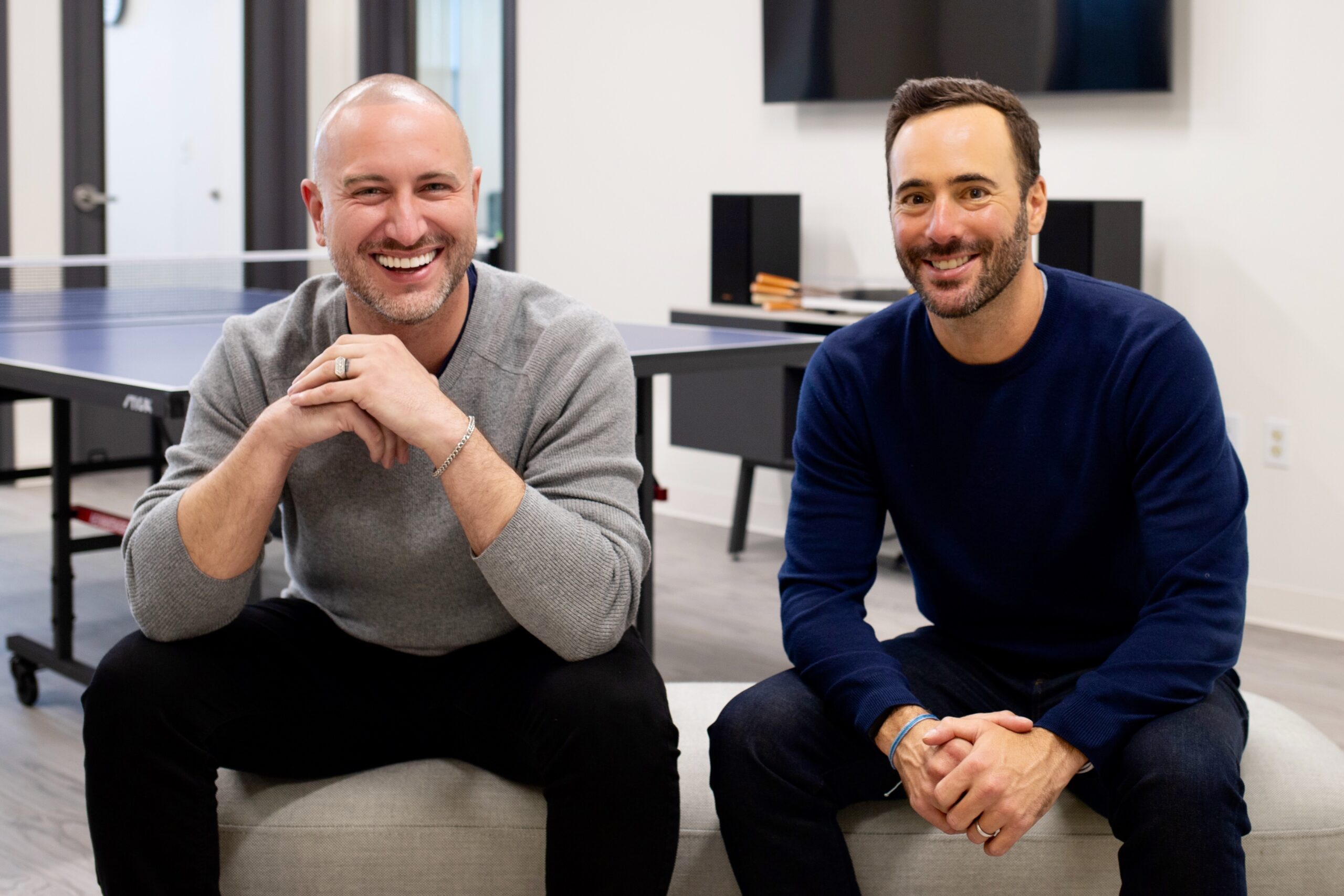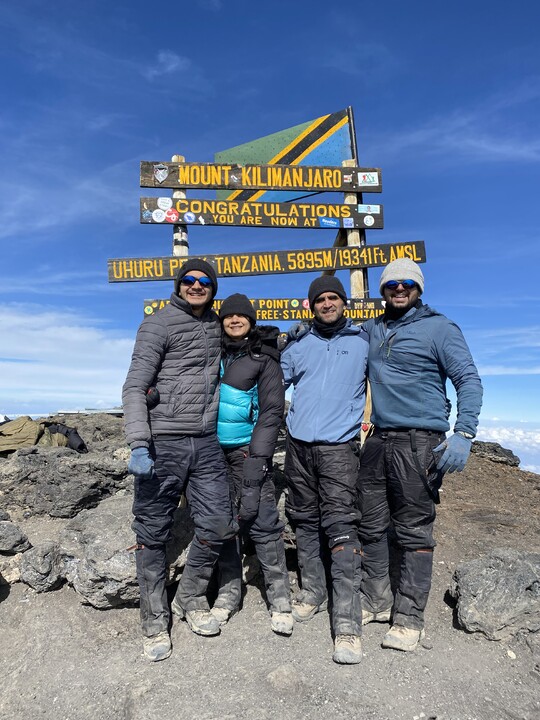Category: Blog
Six Years of LiveOak Gives: Announcing Three New Awardees and a New Class of LiveOak Scholars
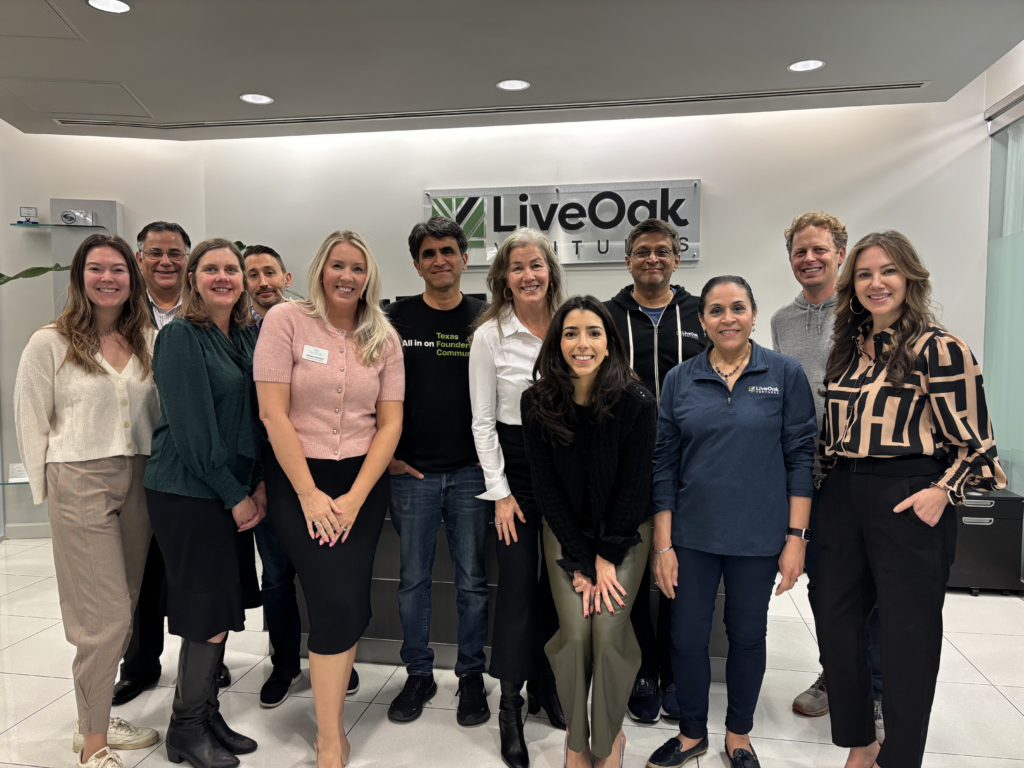
We are thrilled to celebrate six years of community impact through the LiveOak Gives program. Since its inception, LiveOak Gives has donated over $1 million in grants to support local non-profits across Texas. This year, we are excited to announce three exceptional new awardees and a new class of LiveOak Scholars.
The LiveOak Gives program leverages the scale of the LiveOak network to support local non-profits that focus on vulnerable populations in three key categories: children, the elderly, and families affected by poverty. This approach reflects our commitment to fostering inclusive growth in the broader community, particularly for organizations that embody the Texas spirit and resilience and have the potential to scale their impact.
This year was especially significant as we introduced an application process for LiveOak Gives for the first time. We received an overwhelming response with 29 applications from incredible organizations dedicated to making a difference. After a thoughtful review, we selected the top three non-profits whose missions align with our values and demonstrate a strong potential to create a material difference in their communities.
- Austin Explore – empowers youth through a combination of mentorship, leadership development, and outdoor adventure. Their work helps foster resilience and self-confidence among young people, preparing them for future success.
- Saint Louise House – provides stable housing and comprehensive support to empower single mothers and their children to overcome homelessness.
- Seedling Foundation – supports children impacted by parental incarceration through school-based mentoring programs that promote academic success and personal growth.
Through these partnerships, the LiveOak Gives program seeks to amplify the voices and missions of these organizations, ensuring they have the resources and visibility needed to grow.
Last year, we were excited to introduce a program of our own after years of supporting local non-profits—the LiveOak Scholars program. This initiative reflects our commitment to empowering the next generation of leaders in STEM and business, and we feel inspired by the opportunity to support their journeys.
The LiveOak Scholars program goes beyond financial support by connecting scholars with mentorship opportunities, internships, and a professional network within the LiveOak community. The goal is to cultivate local talent and provide them with the resources and guidance needed to thrive academically and professionally.
The class of 2024 was selected from a pool of over 180 applicants through a process that was both competitive and collaborative. We partnered closely with our portfolio companies to identify students who exemplify academic excellence, resilience, and leadership. Ultimately, the top seven students were awarded scholarships, reflecting our commitment to investing in local talent to drive long-term prosperity in Texas.
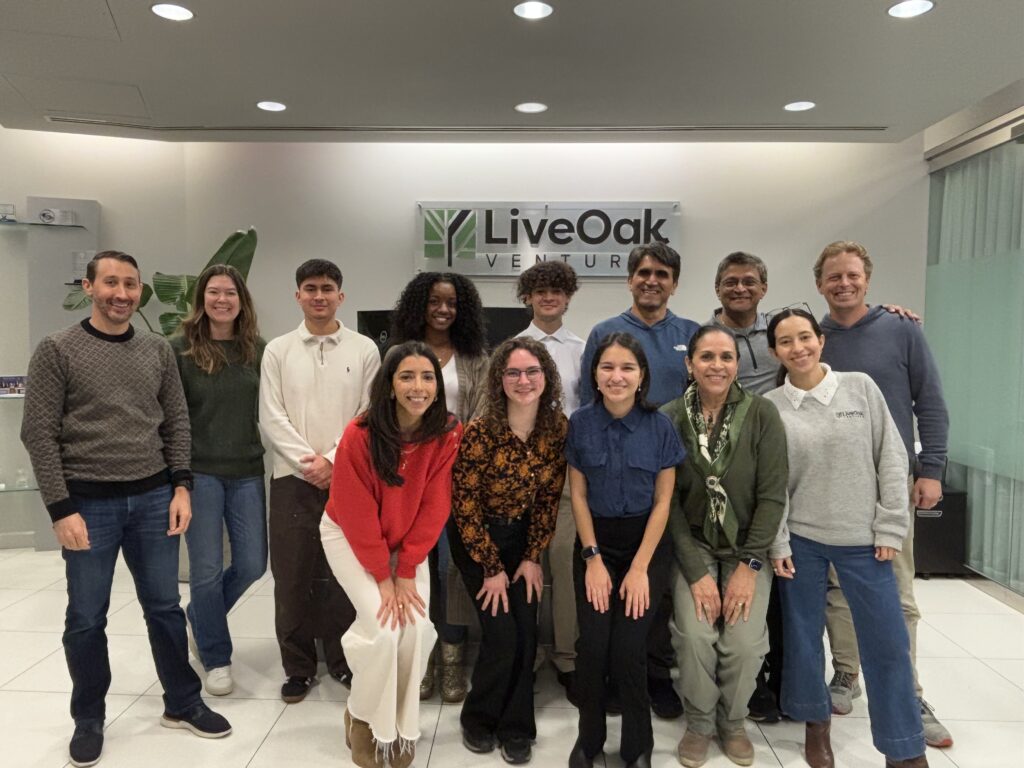
We look forward to announcing the LiveOak Scholars Class of 2025 in late spring as we continue to support the local talent in our community.
We are grateful to the Austin Community Foundation, and the generous donors of the LiveOak Gives program, whose support has been instrumental in launching and sustaining the LiveOak Scholars program.
A Heartfelt Thank You
None of this would be possible without the unwavering support of our friends in the technology ecosystem. We extend our deepest gratitude to Joe Aragona, Jim Breyer, Darin Hicks, Erin & John Thornton, Katie Fang, Ben Rubenstein, and anonymous donors, as well as the many current and former CEOs and founders within our network who have contributed to this program’s success.
As we reflect on the past six years, we are energized by the impact we have made and inspired by the possibilities ahead. Follow us on social media and visit our website to stay updated on the impact of LiveOak Gives and the LiveOak Scholars program.
Hand-in-Hand for Better Application Security, or Why We Invested in DryRun Security (Twice)

This post is a bit different from my prior “why we invested” pieces – almost a two-for-one – as we’ve actually invested in DryRun Security twice.
Two Founders and an Idea
We were excited to invest in DryRun Security’s initial seed financing. At that point, the company was just the two co-founders and an idea, and we were compelled to invest by both.
We liked the space. Every company is now a software company. Companies must develop software applications to leverage their data and power their business to stay relevant and competitive. Those applications must be protected from threats and vulnerabilities to prevent data loss, disruption, or other financial costs. The process, tool and techniques that provide this protection is called Application Security (AppSec).
Three factors have made AppSec more critical than ever:
- More Code: The rise of coding autopilots means more lines of code are being written than ever before.
- Increased Complexity: The shift to cloud-native architectures and microservices has made applications more complex.
- Growing Threats: Attackers continue to evolve, finding new ways to exploit vulnerabilities.
Despite the critical need, we saw a space that was fundamentally broken. Existing AppSec solutions were brittle. They relied on pattern-matching rules that were difficult to write and limited to specific programming languages. This made it hard to keep up with new technologies, leaving critical gaps in security.
To make matters worse, these solutions produced considerable noise (false positives), forcing AppSec professionals to sift through endless alerts to find the true needles in the haystack. This not only wasted valuable time but also risked undermining their credibility by raising a false issue with development. Additionally, existing solutions slowed developers down by presenting confusing results long after code was written – often requiring them to untangle dependencies that had since been built on top of the vulnerable code.
DryRun set out to solve all of this. James Wickett and Ken Johnson, DryRun’s co-founders are veterans in the DevOps and AppSec communities. With experience as practitioners, instructors, and early employees at leading AppSec startups, they were uniquely positioned to tackle this challenge. This gave them a sense for not only founder-problem-fit, but also founder-market fit.
Context Is Everything
Fast forward, and DryRun Security’s vision started to take shape. By integrating directly into customers’ development pipelines, such as GitHub, DryRun recognized code risks as soon as developers checked in code, clearly communicating risks in near real-time—rather than days later.
DryRun Security chose to build their solution from the ground up leveraging LLMs. LLM’s are powerful at understanding code regardless of specific language syntax. This enabled them to move beyond pattern-matching, more easily extend across programming languages, and be less brittle.
But it’s what DryRun Security was able to do next that represented a true leap forward in application security and compelled us to lead their next round. Existing solutions all looked at the literal syntax of code to identify risk. But there are still risks in the code base even if the syntax is correct. For example, there may be authorization issues stemming from an API endpoint being assigned an incorrect role or permission—which is very difficult to detect without analyzing the context. Or a developer adds a new SSO provider, something that’s syntactically correct but deserves review due to being outside of the standard process. Without knowing the context around the code change, risky code changes get missed by pattern-matching tools.
DryRun’s breakthrough, Contextual Security Analysis (CSA), goes beyond looking at the literal syntax of code and allows AppSec teams to understand risk based on code context and behavior. For the first time, DryRun Security enables the left hand of application security to fully grasp the security implications of what the right hand of development is doing – even if there’s not technically an insecure pattern in the code.
Why We’re Excited
DryRun Security is revolutionizing how application security teams protect complex, fast-moving codebases. By combining Contextual Security Analysis (CSA) with the power of LLMs, they’re addressing risks that traditional tools simply can’t—enabling developers to write secure code without slowing down.
James and Ken are leaders who deeply understand the challenges AppSec professionals face, and their innovative approach is already delivering real, tangible benefits for customers.
As software development continues to accelerate and applications grow more complex, the need for smarter, AI-native security solutions has never been greater. DryRun Security’s groundbreaking technology is set to redefine the future of AppSec, and we’re proud to support them on this journey.
Composing Software Masterpieces, or Why We Invested in Fastn
Five Years of Giving Back: Celebrating LiveOak Ventures’ $1M of Grants with LiveOak Gives
In the midst of recognizing 25 years of successful, early-stage investing in Texas by LiveOak Ventures’ founding partners, the firm celebrates a very special milestone within its community-focused initiative — the LiveOak Gives program. Since its inception 5 years ago, the program has now disbursed over $1 million in grants to 20 outstanding local non-profit organizations, reflecting LiveOak’s deep commitment to the ethos that the “rising tide should raise all boats” and not just the tech community.
In line with this ethos, the LiveOak Gives program leverages the scale of the LiveOak network to support local non-profit organizations that focus on the vulnerable populations across Texas in three categories: children, the elderly, and families/women trapped in poverty. As such, the program looks to enable inclusive growth in the broader community, especially organizations that are doing powerful work locally and poised to scale and thus embody the spirit and resilience of Texas.
The LiveOak Gives program selects organizations through an application process that looks for alignment with the firm’s values and priorities around supporting vulnerable groups and the ability for the grant to make a material difference in the magnitude of services and capabilities of the organization. In addition to the monetary benefits of the grant, these organizations also gain recognition and advocacy through several avenues. Their work is amplified via LiveOak’s social media channels which enables them to be spotlighted in local publications and also in community events where they can engage with the LiveOak network. These efforts have often led to subsequent manifold support for these organizations, which include additional monetary contributions, more volunteers, and community advocacy in general. As such, the goal of this program has been to deliver an impact to these organizations that is far greater than the $1M in grants over the 5 years. We are proud to have seen that come to fruition in numerous instances.
This year’s campaign has supported the following organizations.
Age of Central Texas is a center designed for seniors who need help managing daily activities during the day or are at risk of feeling isolated and lonely. The center enables older adults to socialize with peers while receiving the care they need daily. Then they return to the comfort and familiarity of home at night with their family.
Chariot enriches lives and communities by providing transportation and socialization to non-driving seniors, helping them to age in place. Volunteer drivers provide rides for adults 60 and over for medical appointments, grocery shopping, and other necessary errands.
Friends of Children connects children with unique talents to a paid, professional mentor called a Friend. They hire and train friends whose full-time jobs support our youth in succeeding despite the extremely challenging situations most experience, from as early as age 4 through high school graduation.
Women’s Fund was founded in 2004 to focus on the needs of women in Central Texas and a strong belief that investing in women has significant ripple effects in the community. The Women’s Fund makes nonprofit grants in housing, education, child care, and women’s health to support women’s economic security in Central Texas.
LiveOak Scholars is an exciting proprietary initiative being launched by LiveOak Ventures to support and empower Texas high school seniors interested in studying business or STEM fields at a Texas university. The team at LiveOak, and others in the portfolio, will be actively involved in the selection and ongoing mentoring of the awardees. The process is facilitated through the Austin Community Foundation (ACF), and students can indicate their interest in the LiveOak Scholars program while applying. By investing in the future of Texas high school seniors, LiveOak is continuing to commit to the long-term prosperity of the local community.
From the program’s inception to this fifth-year milestone, the LiveOak Gives program is proud to have supported these organizations that are already making a significant difference in the community.
A Heartfelt Thank You
This program wouldn’t be possible without the consistent generous support of Joe Aragona, Jim Breyer, and John & Erin Thornton, alongside numerous current and former CEOs and founders within our portfolio and the broader LiveOak family. Their steadfast support and collaboration have been crucial to the growth and instrumental in scaling this program to make a significant impact.
We warmly invite all of you to remain involved and informed about our endeavors to enrich the community by visiting our website and following us on social media. Together, we are building a legacy that touches lives and uplifts spirits.
Why We Invested in Merit Medicine: Changing the Healthcare Cost Landscape
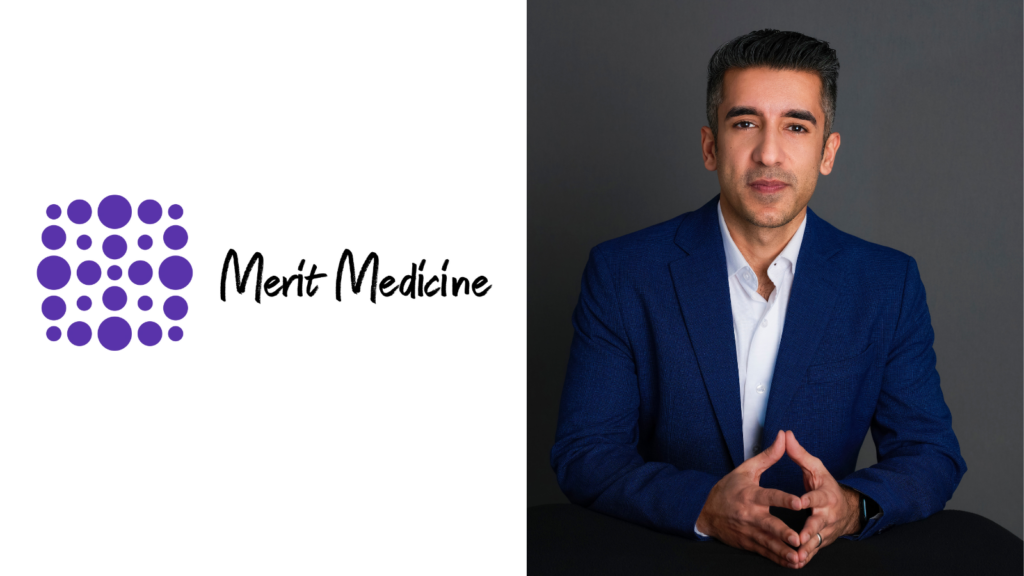
We are excited to share that LiveOak Ventures led the $2M Seed in Merit Medicine. This investment is fueled by our conviction that Merit is transforming how self-funded employers manage their healthcare costs in the rapidly evolving healthcare industry.
The landscape of employer-funded healthcare has witnessed a quiet yet monumental shift, with a significant portion of the workforce now reliant on self-funded health plans. In these plans, employers bear the direct financial burden for their employees’ healthcare costs. As a consequence, Stop Loss (“SL”) insurance becomes not just a prudent risk mitigation tool but an indispensable one — albeit with financial implications that can be staggering. Self-funded employers, especially those in the mid-market with a workforce strength of under 15,000, are finding themselves in the vise of ballooning SL premiums, driven by growth in high-cost specialty medicines and aggressive pricing from healthcare providers. These spiraling costs place immense pressure on employers, creating an urgent need for efficient and innovative cost management solutions.
The current market offerings for risk assessment of employee health are underwhelming at best. They operate at two extremes: either overly simplistic analyses or prohibitively costly consulting services. This is where technology can bridge the gap, and Merit Medicine stands ready to lead such a transition.
Merit provides AI-powered predictive model that deconstructs and analyzes third-party claims and employee data. It identifies crucial health condition trends and accurately forecasts potential high-cost drug utilization. This intelligence enables employers not only to anticipate health risks but also to determine appropriate SL coverage levels, which could translate to significant cost savings and return on investment.
Driving this transformation is the Merit Medicine team, which brings a unique blend of expertise in drug pricing, healthcare analytics, and actuarial modeling. Their domain experience — including stints at Genentech, Aetion, Morgan Health, and The Advisory Board — provides the team with an unmatched perspective on tackling the pressing needs of self-funded healthcare.
We couldn’t be more excited to support Merit Medicine as they provide clarity and cost visibility into a sector previously marked by economic uncertainty and complexity. Merit Medicine is ready to redefine the playbook for employer health coverage, empowering self-funded employers to harness cost-effective and pragmatic healthcare strategies.
Investing in Perigon: Unleashing Contextual Intelligence at Scale
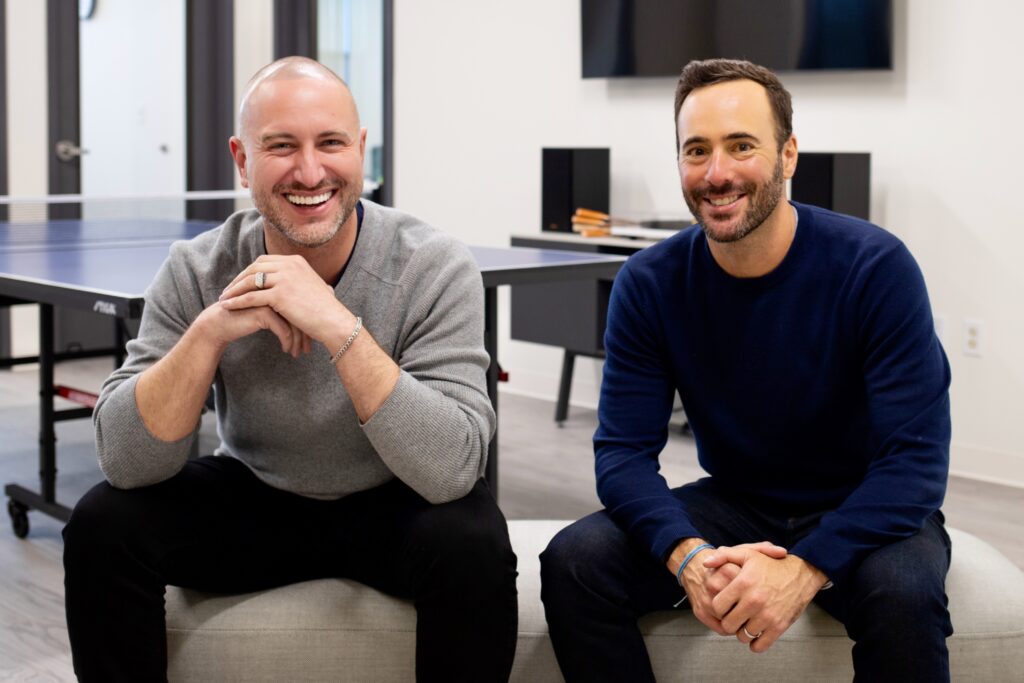
We’re excited to share that LiveOak Ventures led the $5M Seed in Perigon. This investment is a testament to the significant market opportunity, the quality of the team, and the strength of Perigon’s contextual intelligence capabilities.
In today’s fast-paced and ever-changing world, content generation across the web is happening at an unprecedented rate. This content comes from a myriad of sources, ranging from ultra-local and niche to global publishers. As a result, there has been a diffusion of what is considered authoritative and conclusive on any given topic. At the same time, there is an even greater thirst for such content by both consumers and business practitioners. With so much information available and so many sources to vet, it can be challenging for businesses in particular to sort through the noise and extract signals to drive decisions. Insert Perigon.
In mathematics, a perigon is an angle of 360°. True to its name, Perigon’s technology aims to redefine how businesses scour sources comprehensively and contextually to uncover insights that might otherwise go unnoticed. Through a proprietary process that extracts raw data from millions of inputs and data sources daily and then filters, enriches, clusters, and summarizes, Perigon is able to distill terabytes of data into structured, real-time feeds with API access and help ultimately drive actionable decisions. Perigon already serves over 70 customers across a range of industries including financial services, supply chain, government, and media.
We are thrilled to partner with a stellar team that is uniquely positioned to tackle this problem. Joshua Dziabiak, CEO and co-founder of Perigon, is the definition of a serial entrepreneur. Having founded his first startup at age 14, Perigon is Joshua’s 5th startup endeavor, and has been a savant on the creative use of data and performance marketing methods to unlock and scale business models. Prior to Perigon, Joshua co-founded the insurance comparison site, The Zebra. Joshua teamed up with Emmy-winning innovator Josh Rickel to build Perigon. Josh brings a wide range of startup experience across entertainment, media, SaaS, venture capital, and government. Earlier in his career, Josh led sales and marketing at Mass Relevance through its acquisition by Spredfast, culminating in a successful acquisition by Vista Equity Partners in 2018. Their combined vision and expertise were evident from our very first conversation.
It comes as no surprise that the Perigon team has been able to deliver so much value to dozens of customers, many of them household names, in a short amount of time. Perigon’s customers span a wide range of industries that demonstrate the value and versatility of their technology. One example is in the field of financial intelligence, where Perigon goes beyond traditional market news to provide time series data that can enhance algorithms and financial models. Investors and analysts (in this case, the end users) can track unlimited keywords and companies, monitor brand, market, or industry news, discover buy/sell signals, and analyze the perceived sentiment of a publication to predict the market’s reaction.
Another use case is in risk intelligence. Perigon’s news API allows businesses to track real-time event data that may impact their operations, staff, supply chain, or brand. Perigon’s entity, aspect, and topic extraction tracks relevant mentions across sources that are intelligently classified into real-time risk signals, allowing companies to stay ahead of potential disruptions. Their smart classification system distinguishes between hard news and soft news or opinions, while dynamic geo-location and time series tags pinpoint where and when events occur.
The examples we encountered in customer diligence calls underscore a clear “why now” for Perigon. At its core, AI has fundamentally transformed the way businesses think about utilizing unstructured and structured data to deliver valuable analytics.We believe this trend will continue to accelerate the need for clean, structured data products – whether consumed as a key input in what’s now an exploding number of AI/ML models, or directly by an end user.
From a business perspective, Perigon has been incredibly capital efficient, outpacing inferior products that incumbents have taken years to build. In our diligence process, customers consistently praised Perigon’s superior ability to ingest, de-duplicate, and organize a long tail of data sources in a clean way. With features like story summarization, clustering, categorization, sentiment analysis, and enrichment, Perigon has quickly become a trusted partner for leading companies worldwide.
As the first institutional money in, backing visionary entrepreneurs looking to tackle large underserved markets with distinctive technology, Perigon is middle of the fairway for what constitutes a “LiveOak deal”. Here’s to the beginning of an exciting partnership!
LiveOak Ventures Goes “All-In” on New Brand
Embarking on an exciting journey into the next decade, LiveOak’s founding partners proudly celebrate their 25th year of successful, early-stage investing in Texas. Over a decade ago, they founded LiveOak based on the conviction that Texas had all the DNA for a robust entrepreneurial ecosystem and that a venture capital firm that was maniacally focused on Texas entrepreneurs would be the key catalyst to unlock the market’s full potential. Today, that belief has been validated. In the past decade, LiveOak’s partners have helped create about $5 billion in enterprise value and led/co-led over 60 high-growth investments in Texas-based leaders, such as AmplifAI, DISCO (NYSE: LAW), Eventus, Homeward, OJO Labs, Osano, SchooLinks, Take Command Health, and many more, some starting at inception. The firm was honored at the inaugural Austin A-List Awards in 2022 as the Venture Capital Firm of the Year and received the Austin Gives Charitable Champion award.
Looking forward, in line with our successful and proven investment strategy, which has led to us becoming the leading venture investor in Texas, we are now unveiling a significant rebrand. This brand transformation goes beyond a change in name to LiveOak Ventures or a visual shift; we are embracing a tagline that epitomizes our all-in unwavering commitment towards Texas-based founders and the broader vibrant Texas community that we proudly call home.
#1: All-in on Founders
Our commitment to founders takes center stage. We’re here to support you every step of the way. Beyond just providing capital, we will actively assist you in all aspects of company building. As dedicated team players and strategic advisors, we promise to hustle just as hard as you do. We understand the challenges of your entrepreneurial journey and approach collaboration with empathy and transparency. Leveraging our full team, combined experiences, and deep networks, we will work alongside you to help build enduring businesses.
#2: All-in on Texas
Our roots run deep in the Lone Star State, and our rebrand mirrors our pride in the unique spirit and resilience that define Texas. From the thriving tech ecosystem in Austin, Dallas, and Houston to emerging innovation hubs across the state, we are passionate about fostering local talent and contributing to the growth of our dynamic community.
#3: All-in on Community
At LiveOak, community is more than just a buzzword; it’s ingrained in our DNA based on the conviction that our efforts ought to be, metaphorically, like a rising tide that raises all boats and not just the handful of entrepreneurs we back. That emphasis has translated to us seeding LiveOak Launch (an initiative to support women leaders in the community), our participation in countless panel discussions, hosting community networking events, and taking board roles in notable local non-profits. Above all, we are proudest of the LiveOak Gives Program, an annual initiative that leverages the scale of the LiveOak network to support local non-profit organizations that focus on the vulnerable populations in our community—children, the elderly, and families trapped in poverty. We are excited to announce the close of our fifth campaign and have collectively surpassed $1M in grants to 20 organizations.
The Next Decade and Beyond
As we double down on our Texas entrepreneur-focused strategy, we remain steadfast in establishing strong foundations that contribute to the development of future leaders. This exciting new chapter lays the groundwork for industry-shaping investments and to make a positive impact. Our team is energized, our vision is clear, and we are ready to support the bold ideas that will define the next era of innovation.
To our founders, partners, and the entire LiveOak Ventures community, we thank you for over a decade of collaboration, trust, and shared successes. We invite you to join us on this exhilarating journey into the next decade and beyond, where we will continue to be All In on Founders, Texas, and Community.




